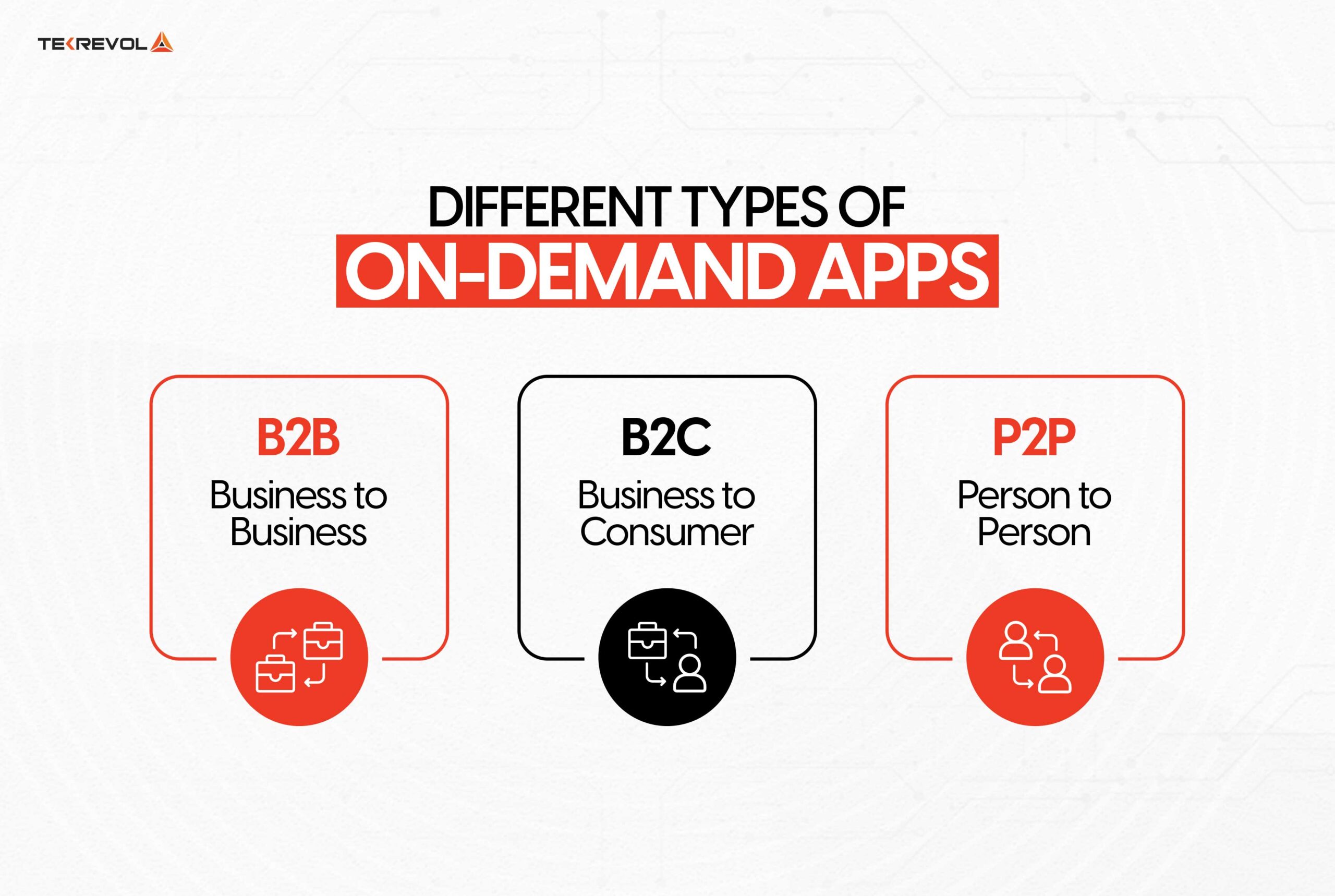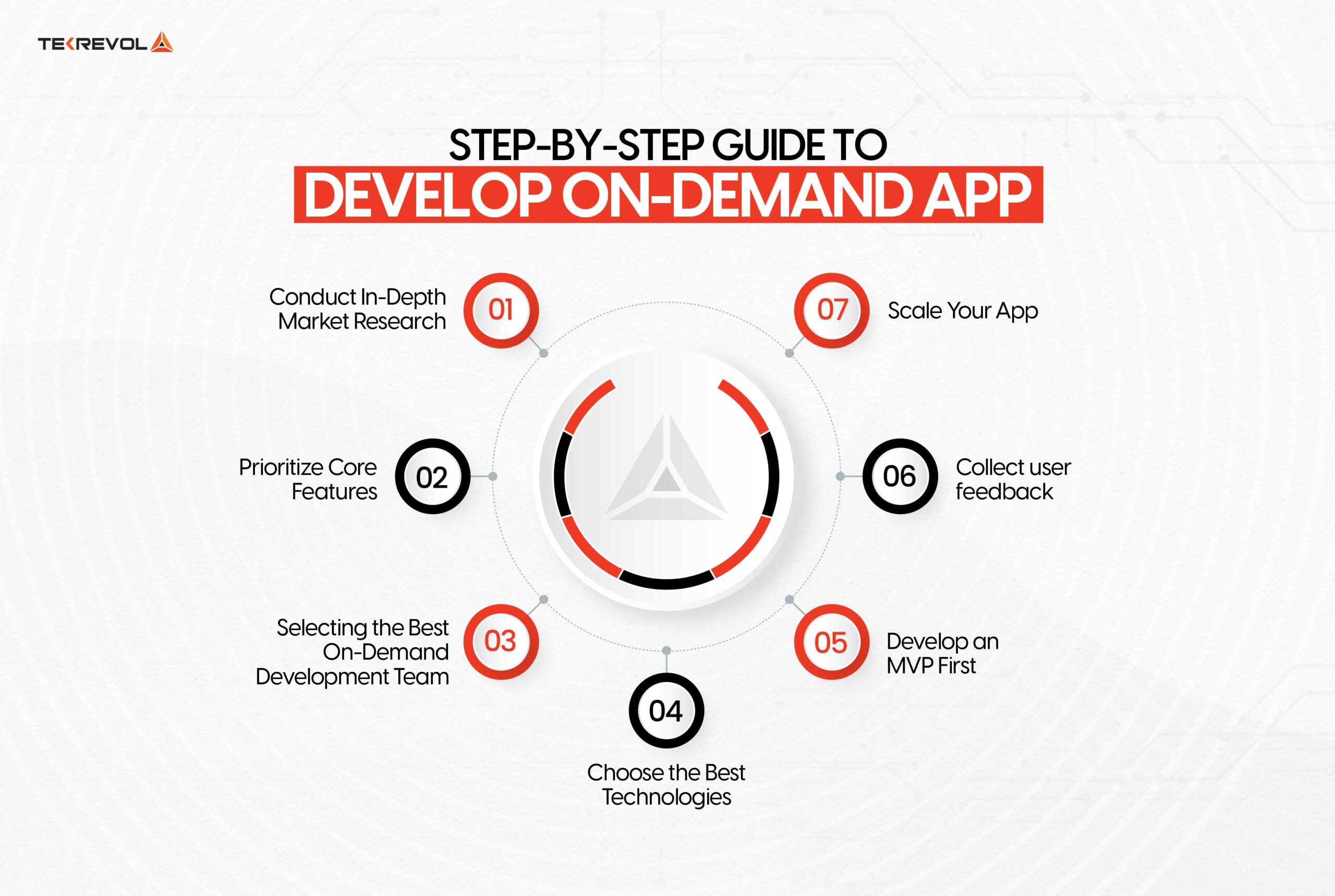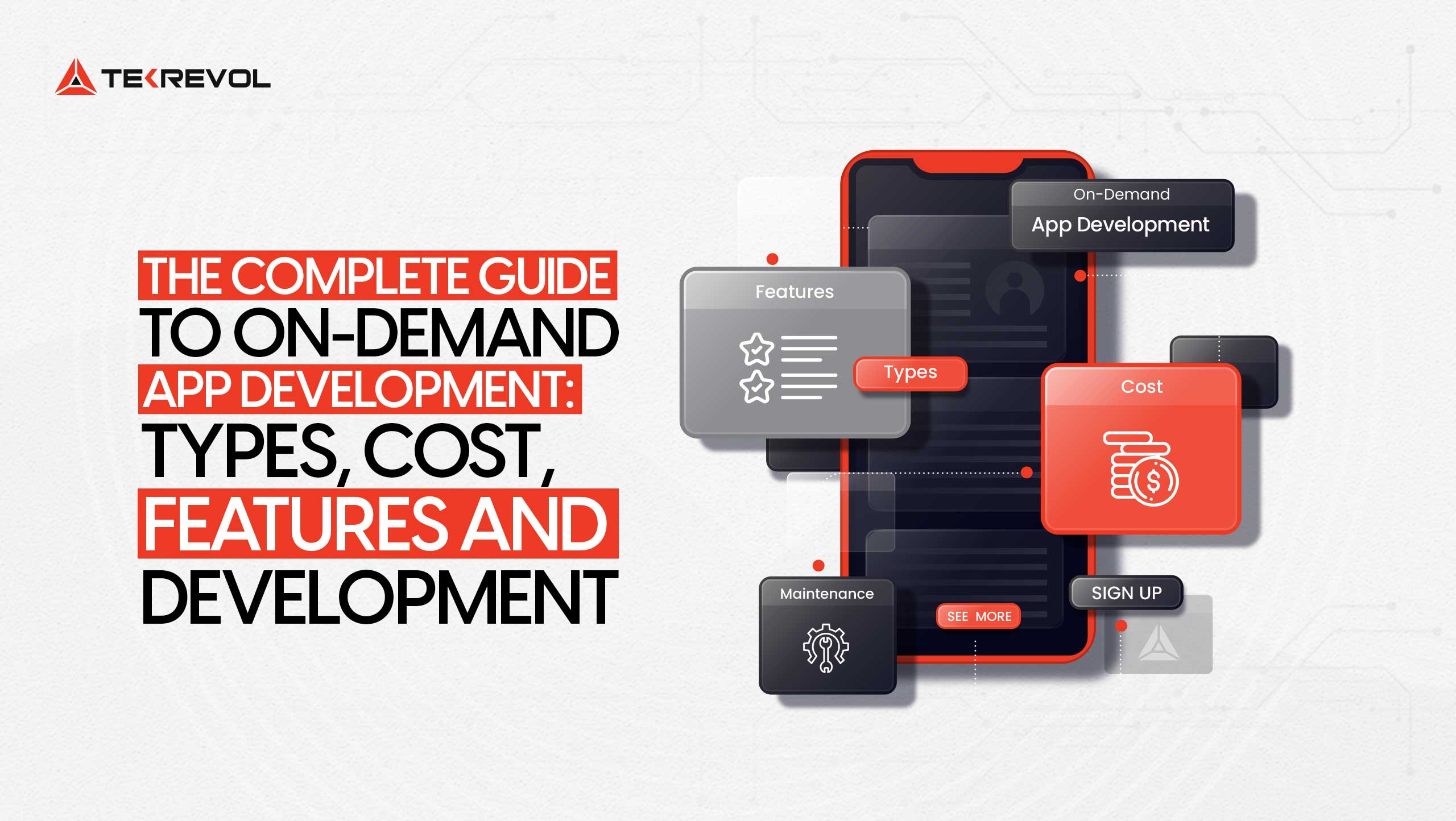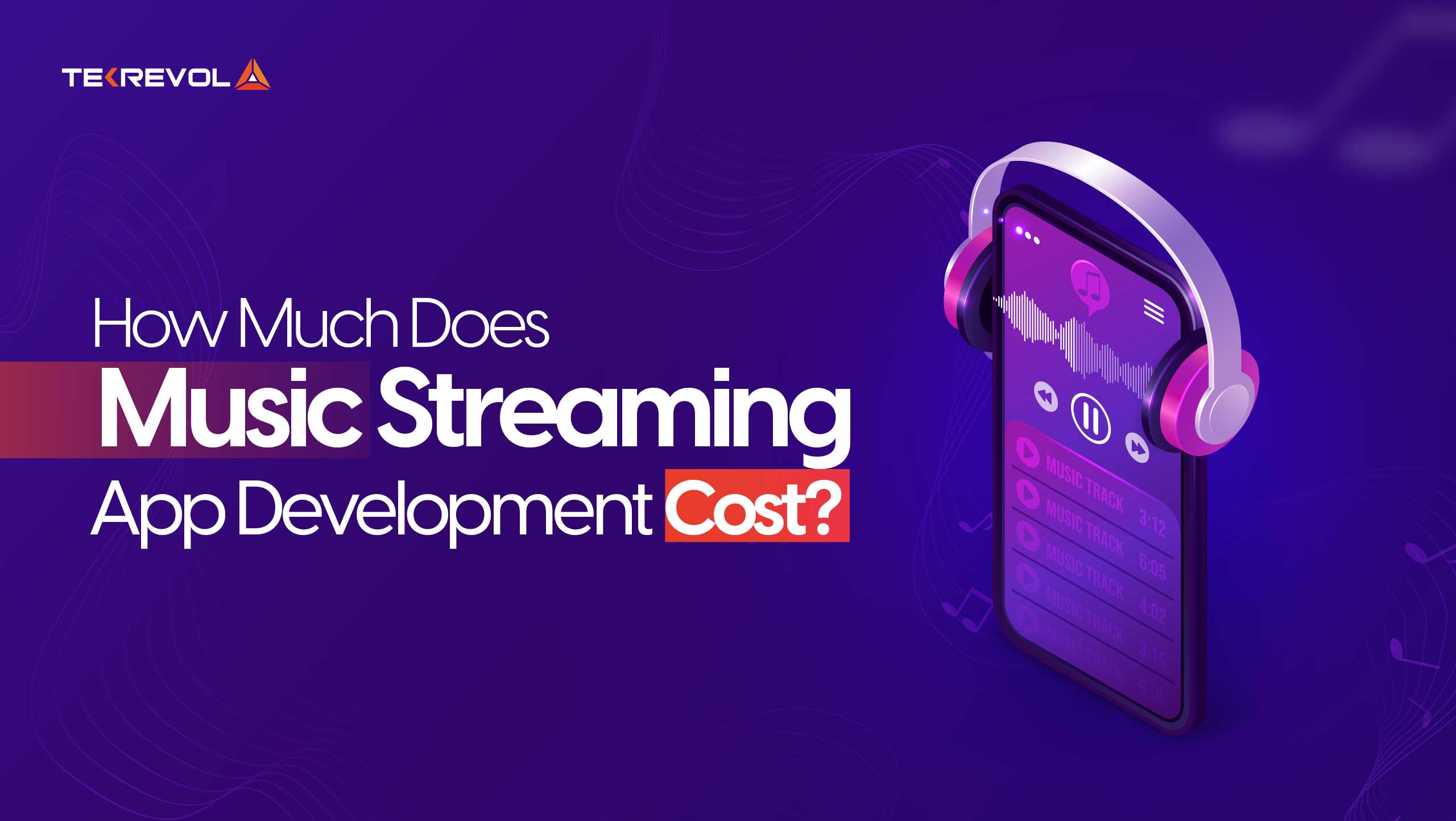On-demand applications are known as an efficient marketing method that allows businesses to offer their products and services to specific clients. The premise is simple yet powerful: customers may instantaneously access services and products through their mobile devices.
Users now rely on these applications for anything from meal ordering and transportation rentals to simplified health consultations and home services.
According to Statista, the On-Demand app business is currently estimated to generate $335 billion in sales by 2025, with half of the world’s population utilizing On-Demand apps.
However, beneath this smooth veneer of usefulness, there is significant complexity and hard labor, involving specialist engineering, planning, and an awareness of common user preferences.
In this post, we will explore what an on-demand app is, what features it should have, development tactics, and the development cost.
What are On-Demand Apps?
The preferred method for bringing clients and companies in a variety of sectors together is now through on-demand service apps. The platforms serve as a link between the user and the provider. Whether someone wants to order food, book a ride, or find a fitness instructor, these apps make it easy to access exactly what they need at their convenience.
Popular, integrated applications like Uber set the standard for sectors with technology-driven activity. Consumers can command a vehicle and monitor the position of a driver on the route in real-time, replacing a taxi or bus. Apart from transport services, the business created UberEats, the meal delivery service that brings ordered meals from nearby restaurants. Uber is perhaps the most popular on-demand app, has easy solutions, clear cost, and is very trustworthy.
The main idea behind these apps is simple: they provide quick and easy access to service providers. Both consumers and suppliers find it satisfactory because it eliminates the need to look for information for lengthy periods of complex reservations.
Here’s how a typical on-demand app works:
- The user makes a request for a service.
- The app connects them with a service provider that is currently online.
- The provider analyzes and approves the request.
- Payment is pre-authorized.
- The customer receives the service.
- When the customer agrees to the service, the payment is made.
A Burson-Marsteller survey indicates that 42% of American adults have used at least one on-demand app service, and the percentage is still rising
Several factors contribute to the appeal of these apps:
Lower costs: On-demand platforms pose a threat to traditional service providers because they offer cheaper services.
Availability: The constant availability of cell phones in society has made services readily available to users at all times.
Customized to the user’s demands: On-demand applications must move quickly because they are service-oriented. For instance, unlike traditional service reservations, an app for home repair, like Handy, can arrange for a handyman to visit your house the same day.
Flexible and safe payment options: Nearly all platforms offer safe ways to make payments using services like Square or local mobile money. Many give even more flexibility in the form of cash payments.
Minimal work: Placing a subsequent transaction is simple and quick because payment information and service preferences are saved.
Different Types of On-Demand Apps

When considering designing on-demand software, one critical question must be answered: what type of solution will be provided? It will outline the program’s overall design, available capabilities, and who will use it. On-demand apps are widely categorized into three kinds based on the user interactions they allow:
1. Business to Business (B2B)
B2B on-demand apps are designed to connect businesses with other businesses that share similar characteristics. These platforms facilitate communication between firms such as suppliers, service providers, and maintenance companies. They facilitate working processes and make them more effective.
For example, Walmart goods suppliers have created bespoke mobile applications that communicate with the company’s supply chain system. According to Statista, the European B2B e-commerce sector is predicted to reach $1.8 trillion by 2025, which demonstrates that there is greater potential within this industry.
2. Business-to-Consumer (B2C)
B2C on-demand apps are aimed at individual consumers and allow them to access items and services directly. These applications might be specific to a particular service provider, such as a restaurant’s pre-order and delivery app, or they can serve as a platform for several service providers.
A notable example is the Starbucks app, which allows users to order food and coffee, prepay for them, and perform a variety of other things including selecting pick-up or delivery location. Research by the PRNewswire, the global B2C e-commerce market is expected to total $7,724 billion by 2025.
For the time being, investigating the market to discover a solution for the expanding needs of over 8 billion people by 2025 presents a significant possibility to produce money. So by deciding to go for an on-demand app, you have so many choices to make money fast.
3. Person-to-Person (P2P)
P2P On-demand apps help users find other users willing to swap goods or services with willing buyers or sellers. These are to be defined as P2P marketplaces where buyers and sellers can directly transact with numerous services that may not be easily available as commodities in the marketplace.
For instance, BlaBlaCar is an online marketplace providing a platform to interested people for cooling and also enables them offer to offset transport according to the desired route. Another example is Glocalzone, which allows a tourist to assist others who want to buy items in another nation while earning money for his or her efforts.
On-Demand App Development Across Multiple Industries

On-demand service applications have grown throughout a variety of industries, offering customized services to match any requirement. These applications range from hailing taxis to purchasing food and even arranging duties at home, making them useful marking points. Here’s a quick summary of how on-demand app development is used in various industries, as well as some examples.
Ride Booking On-Demand Apps
The evolution of on-demand apps has made taxis and transportation services more accessible than ever before, allowing anyone to book rides. With a few clicks, users may request a car, track its arrival on a map in real-time, and make use of streamlined payment and communication options. Successful taxi apps have the following key features:
GPS Navigation: Important for monitoring drivers within close proximities.
In-App Communication: It enables the rider and the driver to communicate directly.
Rating System: Gives feedback while also ensuring that the services that it offers meet the expectations of the customers who patronize them.
Popular apps in this area include Flywheel, Curb, and Free Now. MoveUp, on the other hand, is a comparable P2P transportation platform that caters not only to ordinary passengers but also to those with specific physical ailments or who must transfer huge goods such as medical equipment.
Food Delivery On-Demand Apps
Mobile apps have made it easier for individuals to get food from nearby businesses. They look about, order from the available products, and serve them straight by cooks. When it comes to online food delivery apps, the primary focus is on punctuality and convenience of use. Key players are:
- Uber Eats is well-known for its vast number of offices and fast shipping.
- GrubHub offers a diverse selection of restaurants as well as straightforward and convenient navigation.
- DoorDash focuses on delivery speed and restaurant variety.
Customers with busy schedules can rely on timely meal deliveries, while restaurant owners enjoy the added advantage of increased orders and revenue generated through these apps.
Household Chores On-Demand Apps
On-demand apps can also help with daily jobs like cleaning, maintenance, and even pet care. Clients can readily order services, and specialists can visit individuals’ homes. Examples of popular apps in this area are: Examples of popular apps in this area are:
- TaskRabbit: Allows people to find and hire professionals for a variety of projects.
- Merry Maids: Specializing in residential cleaning services.
- Thumbtack: Provides everything from home repair services to catering for events.
Such apps make it easier to manage many household tasks.
Gifts and Flowers Delivery
For occasions like birthdays and anniversaries, social on-demand ground services provide the finest option for sending presents and flowers. Customers can select the things they require and schedule deliveries or pick-ups. Leading applications include:
- UrbanStems: Provides a range of beautiful flowers and other gift products.
- Gyft: It essentially focuses on providing digital gift cards for different stores.
- Giftagram: Offer nuanced gifts and have them delivered.
These platforms ensure that one may make appropriate and meaningful gift choices without having to physically visit the businesses.
Healthcare On-Demand Apps
Telemedicine applications are mobile health apps that allow consumers to obtain medical assistance from practitioners for a variety of concerns, including early medical problems. Though they cannot replace physical examinations, they are useful in other situations such as appointments and check-ups. Notable apps in this sector include:
- Doctor on Demand: It provides video consultations with doctors and therapists.
- Pager: Allows users to quickly get in touch with healthcare providers.
These apps are especially useful for treating minor ailments and making routine doctor appointments.
Logistics Management Apps
Logistics management apps can assist in the timely tracking and delivery of shipments and consignments. They help in getting real-time shipment visibility, custom-made carrier choice, digital signatures, and evidence of delivery, thus enhancing logistical operations.
The buyers’ logistics market has recently been viewed as potentially untapped and the market is expected to reach $75bn by 2030. Notable examples include:
- Uber Freight: It involves matching a shipper with a truck driver for freight transportation.
- Onfleet: Provides delivery management solutions that entail optimum planning of delivery routes, real-time monitoring, and subsequent evaluation.
They are independent networks that directly link the owners of the cargo with transportation providers.
Read More: How To Build an On-Demand Delivery App Like Mrsool
A Statistical Analysis of On-Demand App Development
On-demand app development has gained momentum in the wake of the Covid-19 outbreak and it does not seem to be slowing down any time soon. Using these apps, customers may benefit from the one-click service, which is already pretty familiar to people. Here are some reasons why creating an on-demand app could be profitable:
- According to Global Newswire, By 2027, the U.S. market for Internet on-demand home services is projected to top $643.7 billion.
- According to Statista, one of the fastest-growing industries in the on-demand economy, online meal delivery, is expected to reach $343.80 billion in revenue in 2022 alone.
- On-demand services have been used by over 80 million Americans, indicating their widespread adoption.
- According to Business of Apps, uber’s delivery services alone brought in $17.4 billion in revenue in Q42021.
- Nowadays, over 63% of customers prefer to shop online to avoid crowds and long wait times.
Noteworthy, key companies like Uber, Glovo, Airbnb, and TaskRand abbit among others are still extending and contributing to the development of the on-demand economy and achieving outstanding growth. The world has never been more open to creating an on-demand app than it is now as the audience relies on digital solutions.
Step-By-Step Guide to Develop On-Demand App

Here’s a breakdown of the key steps to creating a successful on-demand app:
- Identify Your Niche and Study Your Audience: It is recommended to begin with choosing the desired industry, and then consider the requirements and patterns of your target audiences.
- Partner with an Experienced Development Team: Select a professional and experienced team of developers to create your on-demand application.
- Define Project Requirements and Key Features: Explain the purpose of your app and determine what main features it should include.
- Develop a Minimum Viable Product (MVP): Create a prototype with basic functionalities to collect feedback on the app and determine its feasibility.
- Establish a Monetization Model: Select an optimal approach for monetizing the service, whether through commissions, subscriptions, or advertising.
- Test and Launch to Initial Users: Rigorously test the app before launching it and sharing it with a few early adopters to provide feedback.
- Enhance and Scale Your Platform: Taking into consideration the one-month user feedback, improve the app and add further features for it to become a complete platform.
- Monitor Metrics and Expand Your User Base: Monitor the app’s metrics, collect data, and aim to market the app to attract more customers.
As evidenced by the discussion above, every stage of on-demand app development has its strengths and weaknesses. The number of steps may differ depending on the project’s possibilities, but following this guide will help you lay the proper groundwork for your app. Do not stop here, we will let you know each step in detail. So have a look!
Break Down of On-Demand App Development Stages in Detail
Creating an on-demand software solution takes thorough strategy and execution to ensure success. From an experienced on-demand app creator, here is a detailed step-by-step flow to guide you through the process.
1. Conduct In-Depth Market Research
Another important move frequently observed in app development is the designers’ failure to focus on market research. The technical aspect of the app is responsible for its functionality, but research is necessary to determine the target market and the difficulties they encounter in designing a market-focused app.
Key tips for conducting excellent research:
Understand your target audience: what they do, what they require, and what hinders them from reaching their objectives. The more information you collect, the closer your app will be to meeting their requirements.
Focus on uniqueness: In the context of competition, it has long been assumed that the best way to stand out is to be distinct. Do not design apps that are similar to existing ones; instead, aim to innovate by adding functionality.
Target a certain group: The challenge here is to strive for the construction of an app that is suitable for all users rather than one that is unnecessarily heavy. It is preferable to focus on the primary users and then expand with fixed periodic updates tailored to their individual needs.
2. Prioritize Core Features
Following the research phase, determine the application’s major attributes. Many clients ask developers to create an app that is similar to successful applications like Uber, but it is more beneficial to create a new concept with unique features tailored to your sector.
While features differ by app type, several essential functionalities are required in all on-demand apps:
User Registration: An efficient and secure client registration process.
Geolocation and Tracking: Real-time location tracking is used to improve the user journey.
Notifications: Informing users about their services as they occur.
Payments: The integration of efficient and secure payment platforms that accept a variety of methods of payment.
Also, outline how the application will be monetized so that it can be sustained in the long term. Public transit apps, for example, may make money by working with transportation companies or other businesses, whereas food delivery apps may make money by charging commissions based on orders or advertising revenue.
3. Selecting the Best On-Demand Development Team
The next step after you have identified the layout and functions of your app is to find the most appropriate on-demand app development company. If a company wants to develop an app, it has two options: build it in-house or go out to seek professional service providers.
In-House Teams: They are more appropriate for large projects that can be tweaked once in a while, but for overhead costs such as salaries, bonuses, and taxes, they can be quite costly.
Outsourced developers: Usually less expensive as compared to the scope of short and long-term projects because you just pay for finished work. Software outsourcing teams work under a contractual agreement that ensures proper protection for both parties involved.
4. Choose the Best Technologies
The technology you choose has a significant impact on your application’s performance and usability. The platform you chose should be appropriate for your target market. There are three main platforms to consider.
Native Apps: Developed either for iOS or Android exclusively so that it will have a seamless interface on the devices it supports.
Cross-Platform Development: Cost-effective because it enabled the app to be run both on iOS and Android using the same source code.
Technology stack: often depends upon the scale of your project and the expectations of your audience.
5. Develop an MVP First
When unclear about the viability of an application or the need to deliver it as quickly as possible, the ideal method is to create a minimal viable product (MVP).
MVP offers a limited set of features that allow users to launch an application as quickly as feasible, evaluate the results with early adopters, and make informed decisions in the future. It helps to control risk and creates the framework for developing your app into a comprehensive platform.
After you’ve created the MVP and introduced it to real-world users, you can update your app, make changes, and add features to get it ready for primetime.
6. Collect user feedback
To improve your on-demand software, you must evaluate what people are saying about it. Personal interviews, surveys within the application, A/B testing, and analytics tracking all help you determine the user’s behavior toward the product. Instead of guessing, using this information allows you to make informed decisions about what modifications should be made.
Testing is one of the most effective methods for determining the necessary adjustments to the featured software. This technique optimizes performance and ensures that the product is closer to the target customer’s needs than if no approach is used, resulting in excellent user satisfaction and retention rates.
7. Scale Your App
After gathering feedback and gaining a deeper understanding of customer requirements, you can scale your program. On-demand app development as a concept is evolving, and neglecting certain trends will not allow a company to remain competitive.
However, it is also vital to create more options that will improve the application in general and address issues that users have not highlighted.
Scalability must be considered early in the development process. Check to ensure that your app’s infrastructure is capable of supporting growth and increasing downloads. Don’t forget to discuss scaling with the development team ahead of time to avoid difficulties that disturb the scale later.
What to Include in Your On-Demand App: Key Features for Buyers, Providers, and Admins
On-demand app development involves structuring the features that are relevant to different users. There are a lot of specific requirements for every segment — buyers, providers, or administrators. Here, you will find an overview of the features of how every role should look to create the most efficient and useful application.
| Solution | Key Features | Additional features | Description |
|---|---|---|---|
| Buyer App | -Registration & Login -User profile management -Payment options and mobile wallet -Marketplace to browse services/products -Booking and ordering functionality -Order tracking -Reviews and ratings -AI-based matching and recommendations -Push notifications |
-Maps and location tracking -Chat options -Order history -Rewards Program -Support |
Designed to be user-friendly and entertaining, with a streamlined experience for exploring and purchasing services or products |
| Provider App | – User profile – Order management – Earnings and reports – Availability status – Customer ratings |
-Real-time geolocation -Chat with customers -Heat maps showing demand for services |
Specifically designed to help service providers track their performance and effectively handle orders while dealing with clients. |
| Admin Web portal | – Content moderation – Manual order management – Fees and subscriptions – Notification settings – User blocking/unblocking – Reports and analytics |
-Simple, functional UI for internal use | Gives administrators the ability to monitor and control buyer and provider apps, guaranteeing efficient operations and data handling. |
| MVP App | – Basic registration and login – Minimal user profile – Essential payment options – Core functionality for booking or ordering – Basic order tracking – Push notifications |
-Basic geolocation -Limited support options -MVP apps typically focus on core features for validation |
without sacrificing full functionality, concentrates on key features to evaluate the app concept and get early user feedback. |
Estimating the Cost of On-Demand App Development
The cost of producing an on-demand app varies; it can range from $30,000 to $300,000, based on factors such as the type of app desired and the total scope of the project. The key driving forces are the number and difficulty of the features, the final interface design, and the utility of an application. Here’s an overview of what you may expect at various levels of complexity:
| App Type | Features | Range |
|---|---|---|
| Basic On-Demand Apps | Essential Functionality Simple UI|ux Single Platform (iOS or Android) |
$30,000-$120,000 |
| Medium- Complexity On-Demand Apps | More Advanced features (e.g., in-app chat, Payment gateways) Custom UX|UI |
$120,000- $200,000 |
| Advanced On-demand Apps | high-level, complex features (e.g., advanced search, BI Tools) Optimized UI|UX for business needs Built for revenue generation |
$200,000 – $300,000 |
- Still unsure about the pricing for your on-demand app?
- Use our cost calculator to get a personalized estimate and better understand your project's budget!
- Calculate Now!
Choose TekRevol for Your On-Demand App Development Project
To design an on-demand app, you’ll need time, strong programming abilities, and knowledge of the target population.
We’re dealing with app creation, modernization, and cloud transformation of applications, having healthcare, logistics, and media solutions. Our dedicated experts implement approaches and tools like IoT, AI, blockchain, and DevOps to optimize your business processes and drive higher revenues.
Recently, we’ve completed the doctor on-demand app development project, “Your Nurse.” This app simplifies the connection between patients and healthcare providers by offering features like real-time geolocation monitoring, secure chat, and quick appointment booking.
Working with the client throughout the development process, we assisted users in swiftly navigating to available nearby doctors, comparing their ratings, and selecting a suitable expert.
As you decide to work with TekRevol, you’ll be collaborating with highly skilled and talented specialists who pride themselves on being open and delivering high-quality work. We value open contact with stakeholders and provide timely information to ensure that the development process runs well.
Whether you’re beginning from scratch or integrating with an existing platform, your project will benefit from our flexible delivery and superior technology solutions.
- Ready to bring your on-demand App Vision to Life?
- Contact Us now to discuss your project











